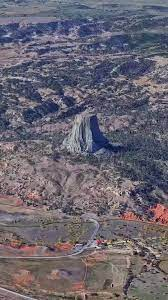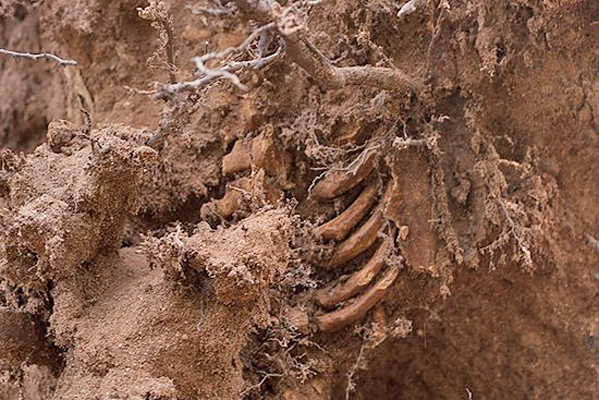Deep within California's ancient Redwood forests, where towering giants have stood sentinel for millennia, a team of scientists led by the intrepid biologist Dr. Harper Thorne embarked on what was expected to be a routine study. Little did they know, their expedition would lead to a discovery so profound it could reshape our understanding of history.
The Redwood forests of California are home to some of the oldest and largest trees on Earth. These ancient giants, primarily coast redwoods (Sequoia sempervirens) and giant sequoias (Sequoiadendron giganteum), have witnessed the passage of time in a way few living organisms have. The General Sherman Tree, for instance, located in Sequoia National Park, is the largest known living single-stem tree on Earth, standing at an impressive height and boasting a massive volume.
Dr. Thorne and her team were commissioned by the government to conduct a health assessment of one of these colossal sequoias. Given the recent increase in severe wildfires and environmental changes affecting these ancient forests, such evaluations had become crucial. The team assembled at the forest's edge, their equipment loaded into vans, ready to delve into the heart of this primordial landscape.
As they ventured deeper into the forest, the sheer scale of the sequoias became ever more apparent. These trees, some exceeding 3,000 years in age, have thick, fire-resistant bark and can grow to heights surpassing 300 feet. Their resilience is legendary; many have survived numerous wildfires, storms, and climatic shifts over the centuries.
Upon reaching their designated tree—a behemoth among giants—the team began their preliminary observations. The recent storms had wreaked havoc in the area, with several nearby trees felled or damaged. At first glance, their subject appeared unscathed, but a comprehensive assessment was necessary.
Dr. Thorne decided to conduct a full perimeter check of the tree, a standard procedure to identify any external damage or signs of disease. As she circled to the tree's far side, she was met with an unexpected sight: a large gash in the trunk, wide enough for a person to pass through. This was unusual, given the sequoia's renowned durability.
The team gathered to examine the gash more closely. It appeared that a combination of storm damage and perhaps a fallen neighboring tree had caused the wound. Sequoias have a remarkable ability to heal; their bark can grow over injuries, sealing them off from infection. However, the size of this gash was concerning.
Equipped with specialized tools, the team carefully entered the gash, taking care not to cause further harm to the tree. Inside, they discovered a hidden chamber, a hollow space that had likely formed over centuries as the tree grew around an empty area. Such hollows are not uncommon in ancient trees and can result from various natural processes.
What truly astonished them was what lay within this chamber: a collection of bones, partially encased in the tree's wood. The tree had grown around these remains, enveloping them in its protective embrace. The discovery of bones within a living tree is exceedingly rare and posed numerous questions.
The team carefully documented the site, taking photographs and samples for further analysis. The immediate questions were: To whom or what did these bones belong? How did they come to be inside the tree? And what could this mean for our understanding of the region's history?
Dr. Thorne reached out to experts in archaeology, paleontology, and dendrochronology to assist in unraveling the mystery. Dendrochronology, the study of tree rings, can provide precise dating of events in a tree's life. By analyzing the growth rings around the area where the bones were found, they hoped to determine when the tree began growing around the remains.
Preliminary analysis suggested that the bones were ancient, possibly predating European settlement in the region. This raised intriguing possibilities. Could these be the remains of an indigenous person or animal? The Redwood forests have been home to Native American tribes for thousands of years. The Yurok, Karuk, and Tolowa peoples, among others, have long histories intertwined with these forests.
As the investigation progressed, the team faced a dilemma. Extracting the bones for study could provide valuable information but might harm the ancient tree. Conversely, leaving them in place would preserve the tree's integrity but limit their ability to analyze the remains fully.
They decided on a non-invasive approach initially, using imaging technology to study the bones in situ. This allowed them to create detailed models of the remains without disturbing the tree. The images revealed that the bones were human, and their placement suggested a deliberate interment.
This discovery led to further questions. Was this an ancient burial practice previously unknown? Or was there another explanation for how the remains ended up inside the tree? The team delved into historical records and indigenous oral histories, seeking any references to such practices.
The local Native American tribes were consulted, and while they had no specific traditions involving burials within trees, they shared stories of individuals seeking refuge in hollow trees during times of conflict or disaster. It's possible that the individual had entered the tree for shelter and, for reasons unknown, never emerged.
As the investigation continued, the team remained mindful of the cultural and ethical considerations involved. They worked closely with indigenous representatives to ensure that any actions taken were respectful and appropriate.
The discovery within the ancient sequoia opened a window into the past, offering insights into the lives of those
The discovery of human remains within the ancient sequoia prompted Dr. Thorne and her team to delve deeper into the cultural practices of indigenous peoples, particularly those related to burial customs involving trees. While initial consultations with local Native American tribes indicated no specific traditions of interring bodies within living trees, further research revealed that various cultures worldwide have engaged in arboreal burial practices.
In parts of North America, certain indigenous tribes practiced "tree burials," where the deceased were placed in trees or on elevated platforms. This method, known as excarnation, involved allowing the body to decompose naturally before the bones were collected for final interment. This practice served both spiritual and practical purposes, facilitating the soul's journey and protecting remains from scavengers.
The team also explored the concept of treetrunk coffins, which have been used in various cultures. These coffins are hollowed out from single logs and have been found in regions such as Europe, Africa, Asia, and Australia. Notably, in Bronze Age Britain, individuals were sometimes buried in hollowed-out tree trunks, a practice that underscores the symbolic significance of trees in human mortuary customs.
These insights led the team to consider the possibility that the individual found within the sequoia might have been placed there as part of a deliberate burial practice. However, the absence of documented traditions specific to the region posed challenges in confirming this hypothesis.
To gain a more comprehensive understanding, the team employed advanced imaging techniques, such as ground-penetrating radar and 3D laser scanning, to map the internal structure of the tree and the positioning of the remains. These non-invasive methods allowed them to study the context without causing harm to the ancient sequoia.
Radiocarbon dating of the bones revealed that the individual had lived approximately 1,000 years ago, predating European contact in the region. This timeline aligned with the era of various indigenous cultures flourishing in California. The findings suggested that the remains could belong to a member of one of these communities.
Further analysis indicated that the tree had begun to grow around the remains shortly after their placement, gradually enveloping them over the centuries. This natural process resulted in the unique preservation of the bones within the living tree.
The team's findings were met with a mix of intrigue and skepticism within the scientific community. Some scholars emphasized the need for caution in interpreting the results, citing the lack of direct evidence for tree-based burial practices in the region. Others viewed the discovery as a potential indication of previously undocumented cultural behaviors.
Recognizing the cultural sensitivity of their findings, Dr. Thorne and her team continued to collaborate closely with indigenous representatives. They sought to ensure that their research honored the traditions and perspectives of the communities whose ancestors once inhabited the land.
As the investigation progressed, the team also considered alternative explanations for the presence of the remains within the tree. One possibility was that the individual had sought refuge inside a hollow tree and, for reasons unknown, had died there. Over time, the tree's growth could have encapsulated the body.
Another theory proposed that the remains had been placed in the tree post-mortem, perhaps as part of a ritual or to protect them from scavengers. The exact circumstances remained elusive, highlighting the complexities inherent in interpreting archaeological findings.
Throughout their research, the team remained committed to preserving the integrity of the ancient sequoia. They implemented conservation measures to protect the tree from further damage and monitored its health closely.
The discovery within the sequoia underscored the intricate relationship between humans and trees throughout history. Trees have long held symbolic significance in various cultures, representing life, death, and the interconnectedness of all living things.
In conclusion, while definitive answers remained elusive, the investigation led by Dr. Thorne illuminated a fascinating intersection of natural history and human culture. The ancient sequoia, standing tall for millennia, had silently borne witness to a human story hidden within its core—a story that continues to inspire curiosity and reverence for the enduring bond between humanity and the natural world.





_cleanup.jpg)







0 commentaires: